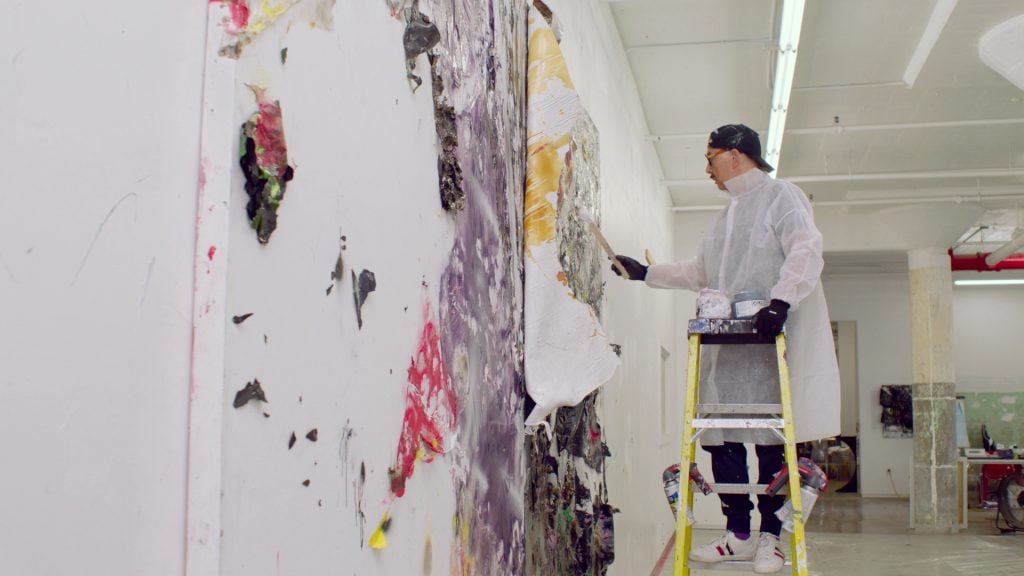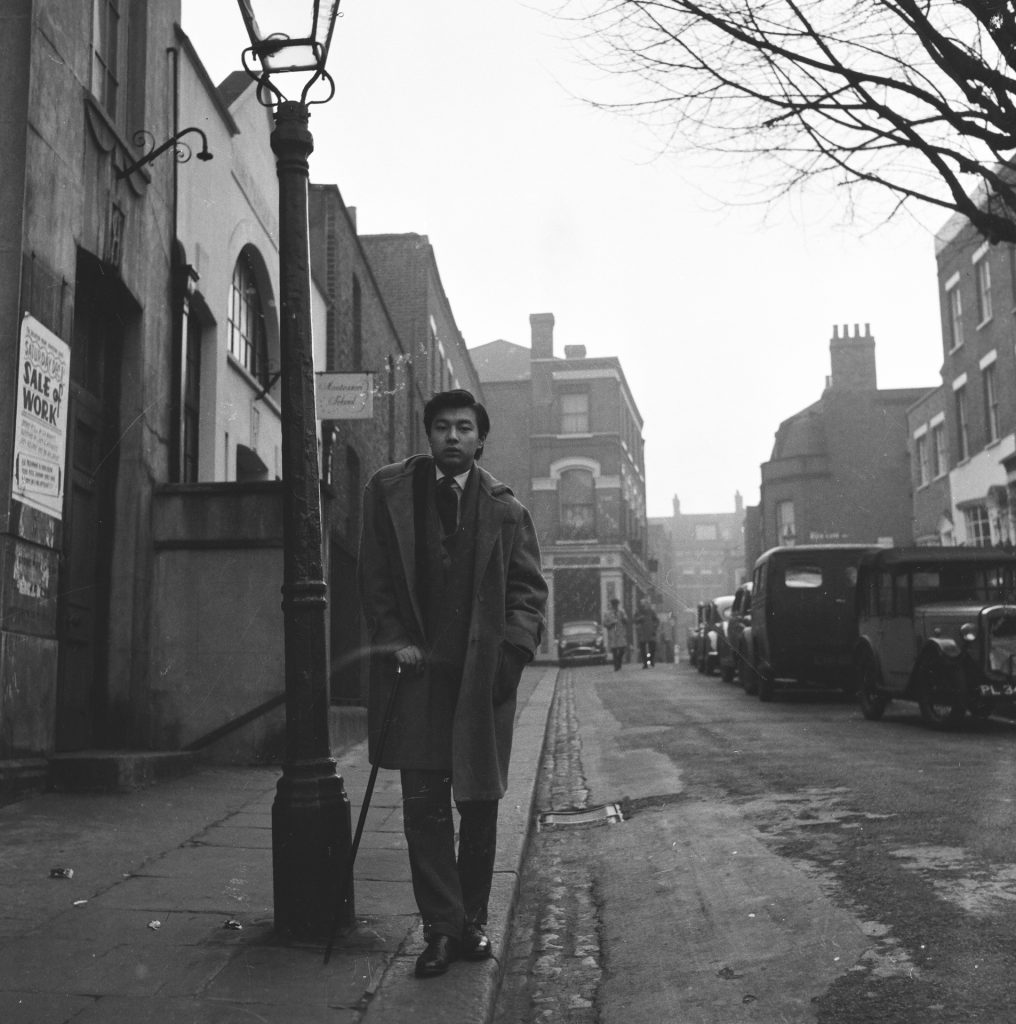Pop Culture
A New Documentary Celebrates the Colorful Life of Mr. Chow, Charting His Journey From Struggling Painter to Celebrity Restaurateur
The HBO film also centers Chow's return to art and the opening of his first solo show in almost 60 years.

The HBO film also centers Chow's return to art and the opening of his first solo show in almost 60 years.

Sarah Cascone

When 12-year-old Michael Chow left China for boarding school in London in 1952, he had no way of knowing of what a colorful life he would lead, trading a career as a struggling actor and painter for a high-profile gig as a restaurateur, serving Chinese food to a who’s-who of the art world, celebrities, and high society across three continents for 55 years.
Now, that unlikely story has become the subject of a new documentary film, aka Mr. Chow. Directed by Nick Hooker, it premiered Sunday on HBO and is now streaming on Max.
Born in Shanghai in 1939 to Zhou Xinfang, a star of the Peking Opera, Chow spent years hobnobbing with art stars like Jean-Michel Basquiat, Andy Warhol, and Peter Blake before returning, in his old age, to making art himself, as he had done as for a decade after studying at London’s Saint Martin’s School of Arts.
The Mr. Chow’s restaurants in London, New York, Beverly Hills, Miami, and Las Vegas are decorated with work by famous artists such as David Hockney, and he’s been the subject of portraits by the likes of Keith Haring. But much of the film is dedicated to Chow’s work in his 60,000-square-foot California studio, creating monumental canvases that he shows under the name “M” with splattered paint using brushes but also hammers, blowtorches, and raw eggs.

Michael Chow with a 1973 painting by Ed Ruscha at the Los Angeles outpost of Mr. Chow’s restaurant. Photo by Allan Tenenbaum, courtesy of HBO.
It was dealer Jeffrey Deitch—who was on hand for the film’s premiere earlier this month at New York’s Museum of Modern Art—who helped Chow rediscover his love for painting, after visiting the restaurateur’s art-filled home in 2011 and inquiring about a piece that turned out to be one of Chow’s abstractions from the 1960s.
Deitch admitted that some people have been skeptical about Chow’s work, but the dealer was adamant to the filmmakers that this wasn’t just some old rich man taking up a random hobby. First, Chow was a young, poor painter—now, he was merely picking up where he had left off when his restaurant business exploded. (MoMA is said to have acquired a work from Chow’s 1958 exhibition at London’s Redfern Gallery.)
Last year, Chow had his first solo show in nearly 60 years, presenting new work at London’s Waddington Custot gallery. (He shared some behind-the-scenes photos of the festivities surrounding the opening with Wet Paint in the Wild, including a photo of the HBO film crew documenting the affair.)

Michael Chow painting in his Los Angeles studio. Photo courtesy of HBO.
The exhibition is a major moment in the film, which uses an elegantly animated black and white sequence by Rohan Patrick McDonald to illustrate Chow’s alienation in moving abroad at such a young age—he never again sees his father, who eventually dies under house arrest, a victim of the Cultural Revolution.
Personal loss also comes in the suicide of a close relative, and the 1992 death from AIDS of Tina Chow, the restaurateur’s second wife and mother of children Maximillian and China—the latter a famous actress and model who once hosted the contemporary art reality show Work of Art.
“All kinds of unspeakable tragedies, I’ve kept buried inside me,” Chow said during the film.
Chow and Tina, a model and jewelry designer, were married from 1972 to 1989, following his brief first marriage to former model and Vogue creative director Grace Coddington, who is among the film’s talking heads. Then there was 25-year-union with fashion designer Eva Chow, with whom he had another daughter, and, most recently, a wedding to fourth wife Vanessa Rano, nearly 50 years his junior, in 2019. (They have since had two children.)

Michael Chow as a young man. Photo courtesy of HBO.
Despite his advanced age of 84, Chow remains a vibrant and energetic force in the movie, whether that be chasing down his toddler offspring, impatiently instructing assistants in the studio, or demanding the filmmakers challenge his shot-for-shot memory of the opening scenes of famous movies like Breakfast at Tiffany’s or Lawrence of Arabia. The documentary opens memorably by interspersing his narration of these cinematic moments with the original footage, proving his prowess.
As a young man, Chow had a brief career in the movies, even appearing in You Only Live Twice (1967) alongside his sister, Tsai Chin (one of the film’s obligatory Bond girls). By the end of his new documentary, you realize Chow almost seems to see his own life as a movie, a series of dramatic scenes populated by colorful characters—with Mr. Chow’s restaurant serving as the set.
But it’s his art that shows his true self, independent of all the trappings of fame, fortune, and celebrity. “The real version of me,” Chow told the filmmakers, “look into my painting. Painting can never lie. Nowhere to go, nowhere to hide. We will find you.”
Watch an exclusive clip from the film—featuring Chow’s thoughts on art and painting—below.
More Trending Stories:
Four ‘Excellently Preserved’ Ancient Roman Swords Have Been Found in the Judean Desert